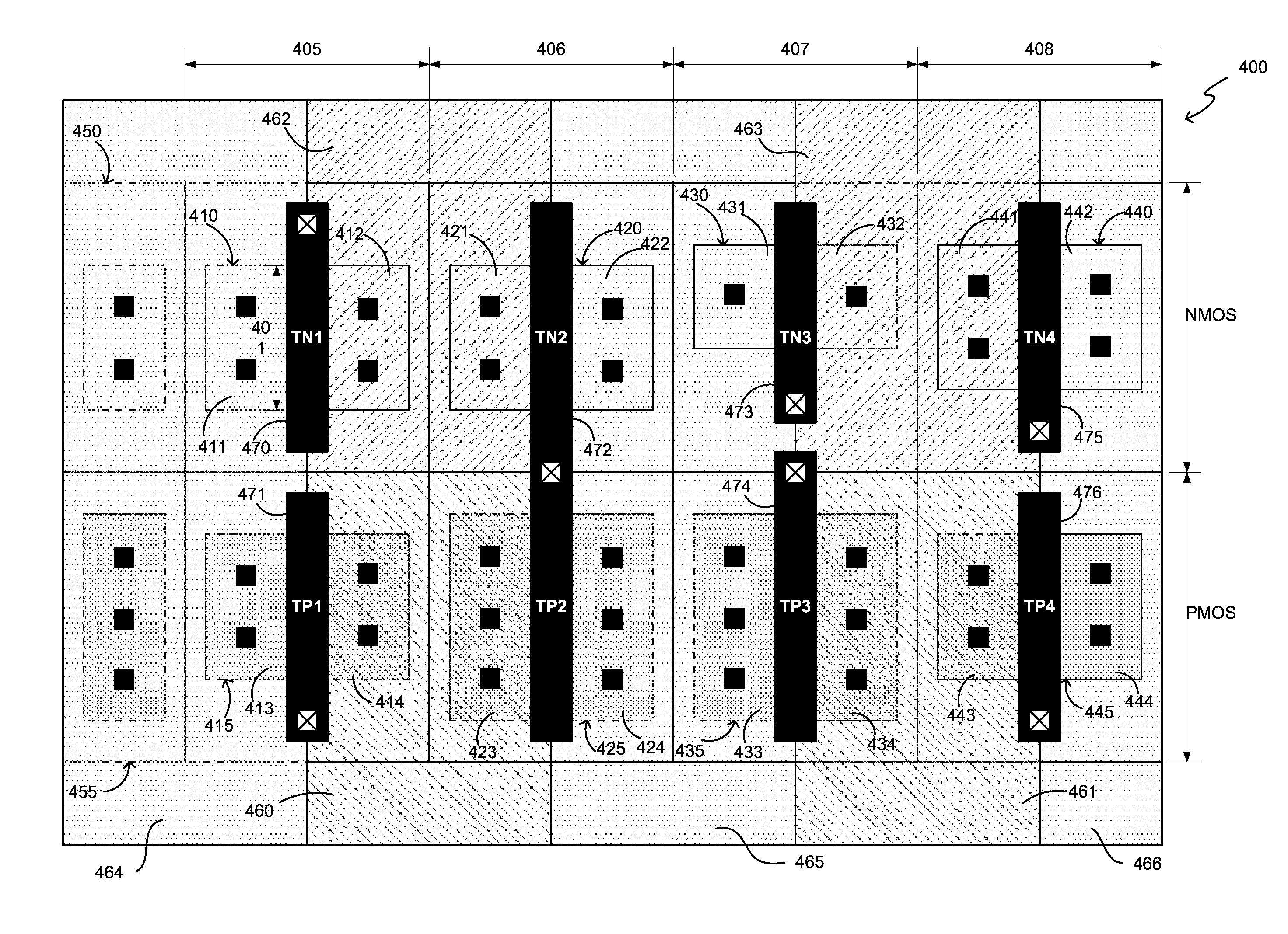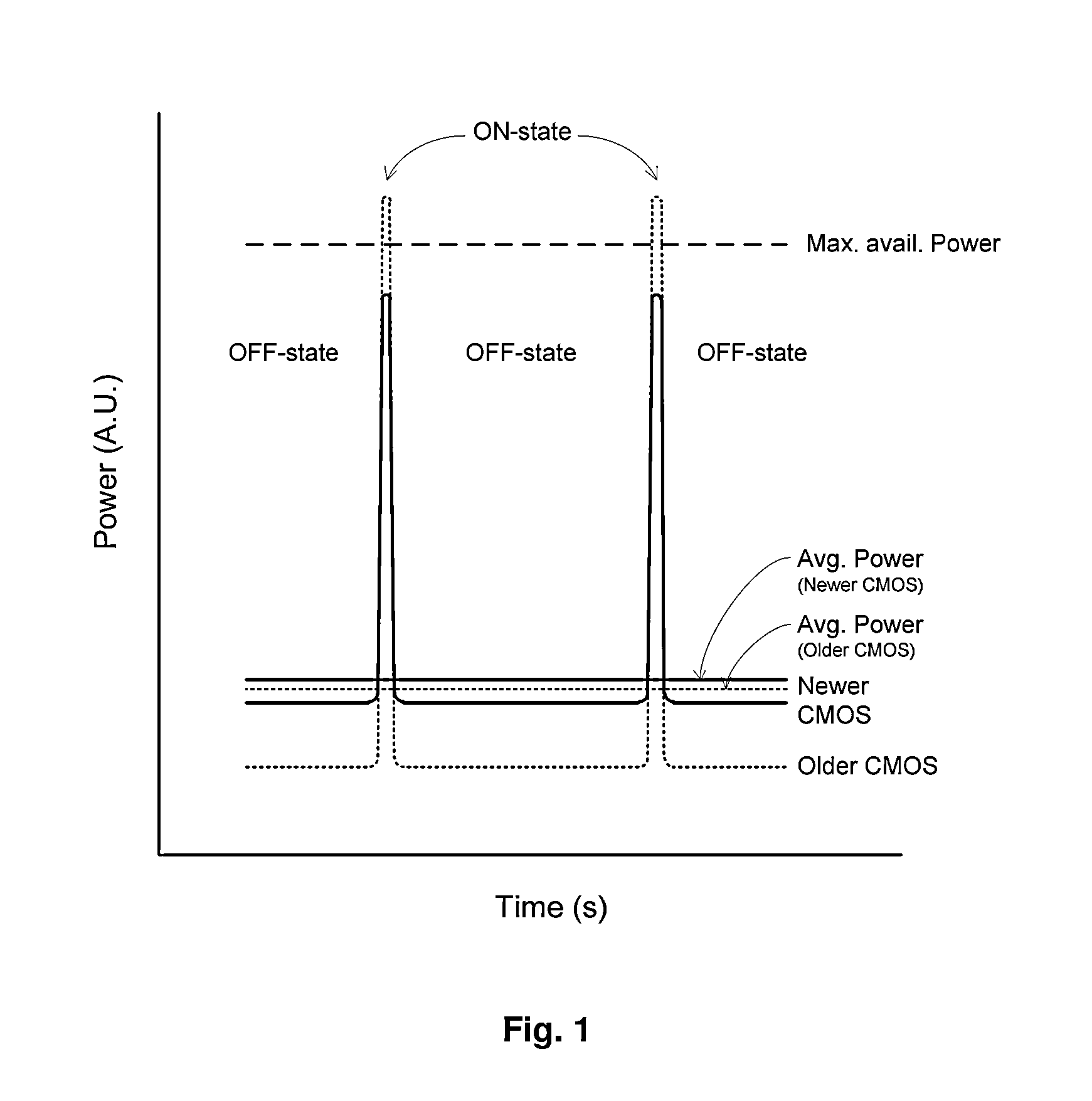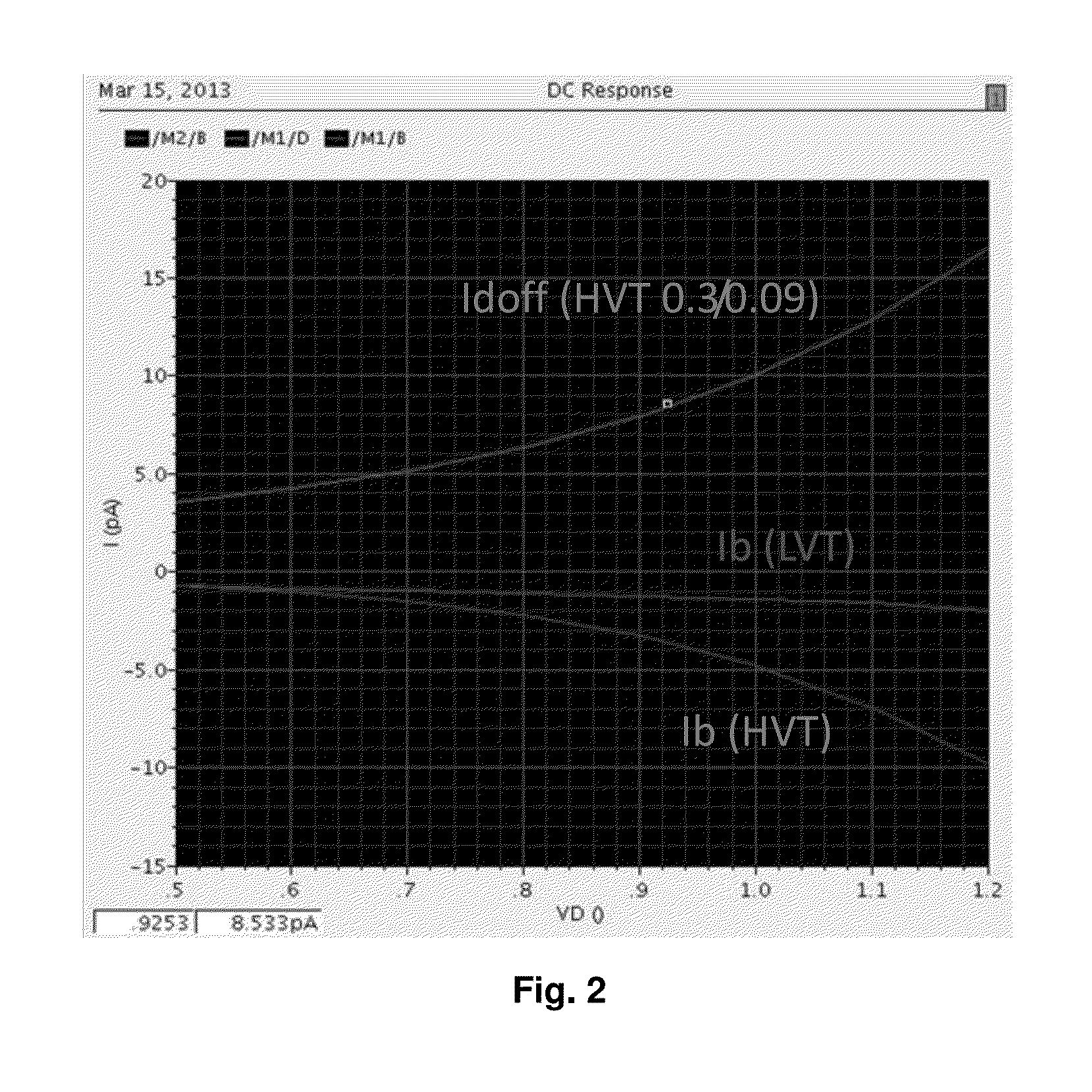Integral fabrication of asymmetric CMOS transistors for autonomous wireless state radios and sensor/actuator nodes
a technology of cmos transistor and autonomous wireless state radio, applied in the field of logic circuits, can solve the problems of higher average power consumption, dominance of static power consumption, and dominance of average power consumption in the fig. 1 of circuits fabricated using advanced cmos technology
- Summary
- Abstract
- Description
- Claims
- Application Information
AI Technical Summary
Benefits of technology
Problems solved by technology
Method used
Image
Examples
Embodiment Construction
[0029]FIG. 3A shows a thin gate-oxide transistor 10 in which the source region 20 is fabricated with a pocket implant 25. The drain region 30 of the transistor 10 is similarly fabricated with a pocket implant 35. Conventionally, the source and drain regions are implanted with the same masking step, and the implantation results in an extension of either region (see regions 25 and 35 in FIG. 3A). The resulting pocket implant and extension are coupled together for each of the source and drain regions. With reference to FIG. 3A, an embodiment of the present invention is shown in FIG. 3B in which the doping of the extension and pocket implant 25 in the source region 20 is different to that of the extension and pocket implant 36 of the drain region (as indicated by the different shading for regions 35 and 36 in FIGS. 3A and 3B).
[0030]Standard CMOS fabrication technologies use multiple pocket and extension implants to realise a desired threshold voltage VT. In the conventional transistor o...
PUM
 Login to View More
Login to View More Abstract
Description
Claims
Application Information
 Login to View More
Login to View More - R&D
- Intellectual Property
- Life Sciences
- Materials
- Tech Scout
- Unparalleled Data Quality
- Higher Quality Content
- 60% Fewer Hallucinations
Browse by: Latest US Patents, China's latest patents, Technical Efficacy Thesaurus, Application Domain, Technology Topic, Popular Technical Reports.
© 2025 PatSnap. All rights reserved.Legal|Privacy policy|Modern Slavery Act Transparency Statement|Sitemap|About US| Contact US: help@patsnap.com



